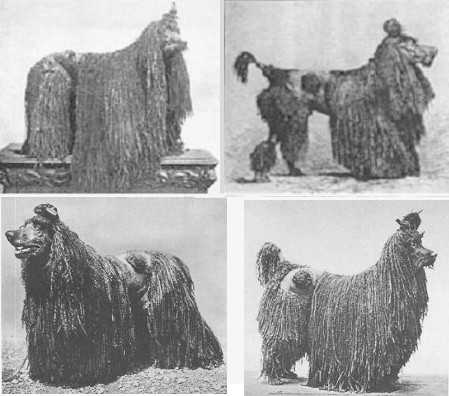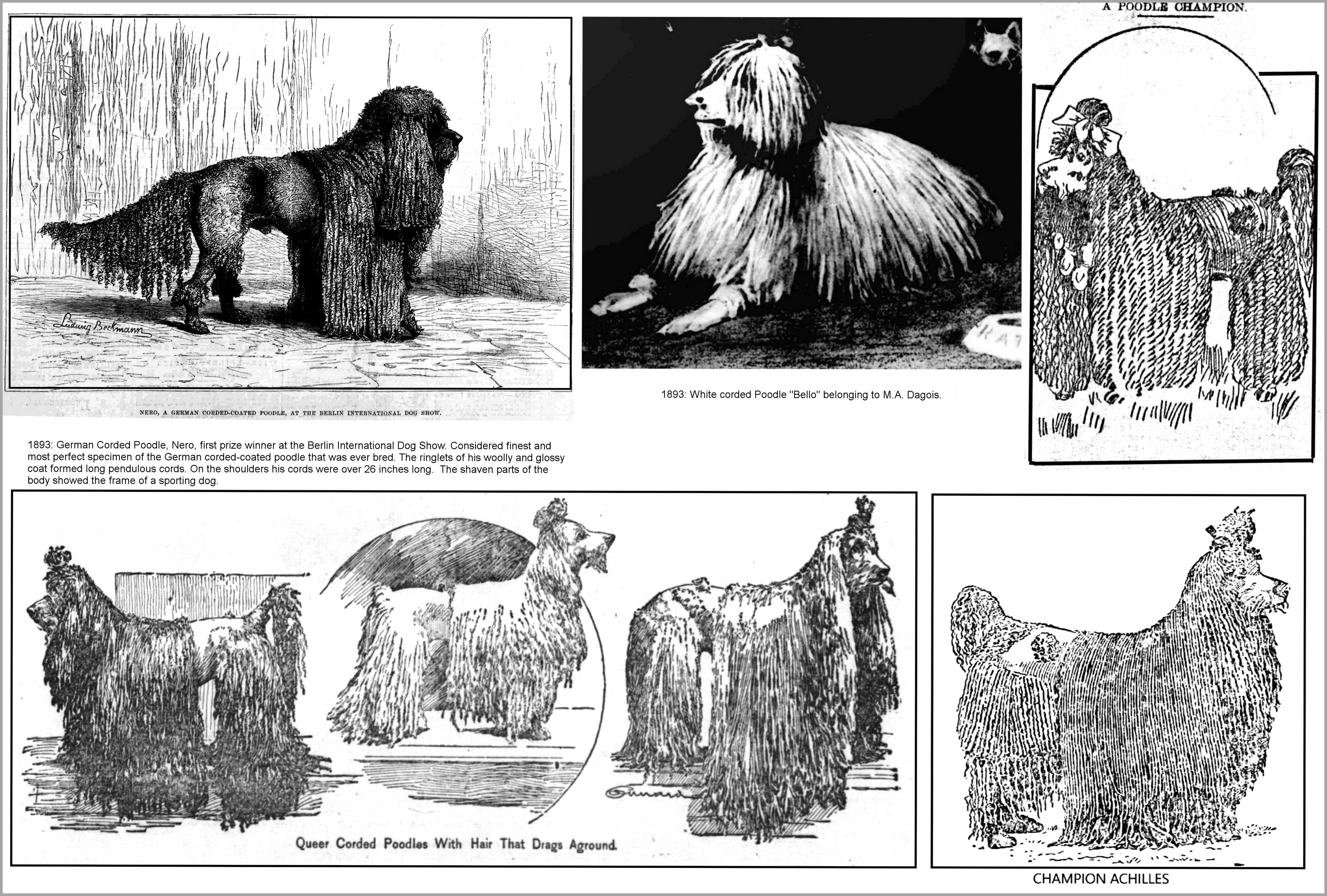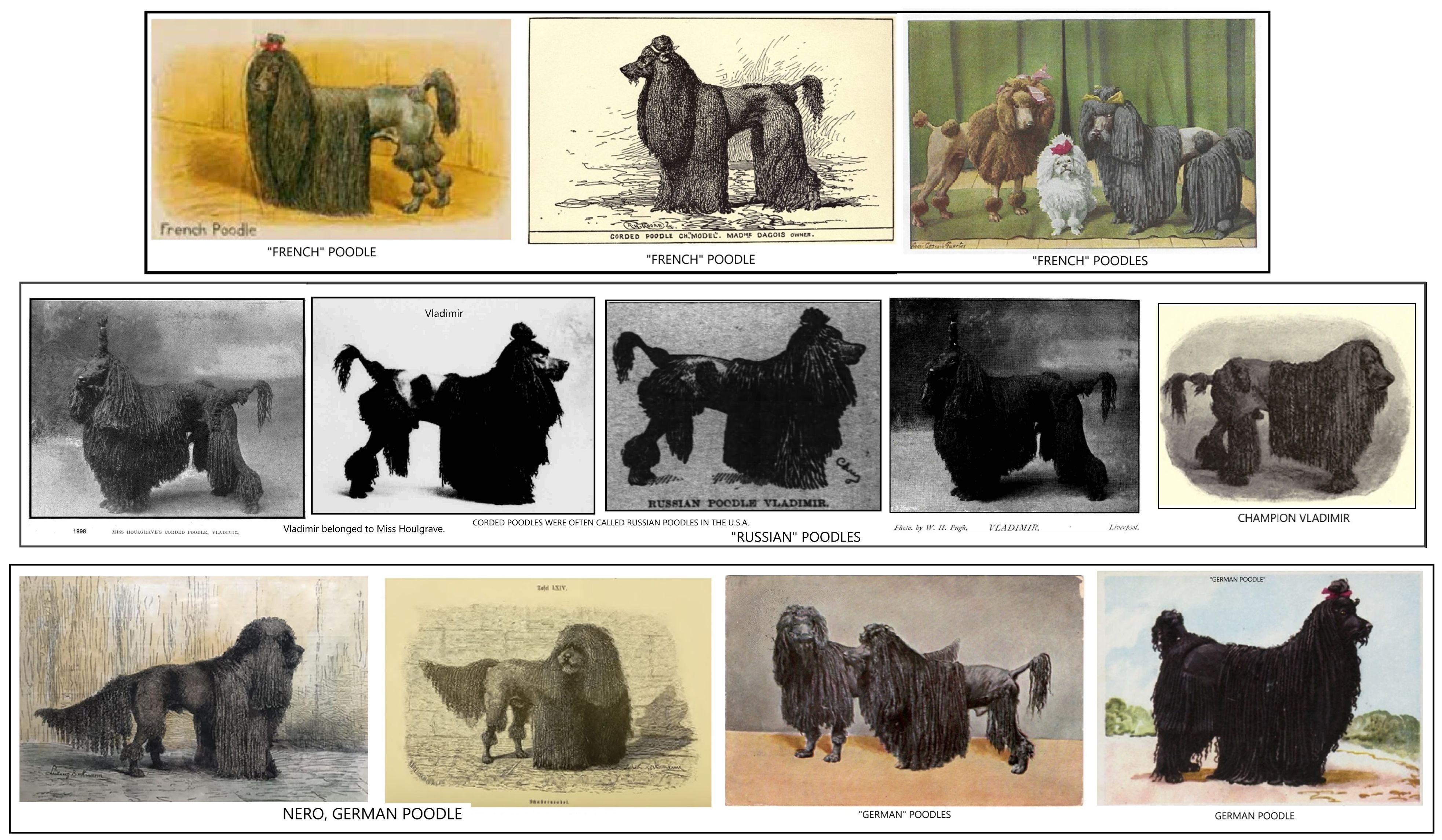
|
THE CHANGING COAT OF THE POODLE |

At one time it was thought that there were two varieties of poodles, the corded and the curly-coated varieties. The corded dogs were thought to be German poodles while the curly-coated variety was a "French Poodle." The Kennel Club's standard for the "curlies" was based on that for the conformation of the corded animal. The only distinguishing difference was the manner in which the coat was treated. If the hair was allowed to grow, it fell naturally into ringlets and if these were not brushed or combed, they formed long cords which could reach the ground (and sometimes were so long they dragged along the ground). The cords also attracted dirt and grease and hindered movement. The heavy, long coats must impede movement unless they were tied up. Eventually the corded Poodle was supplanted by the clipped Standard Poodle we see today.
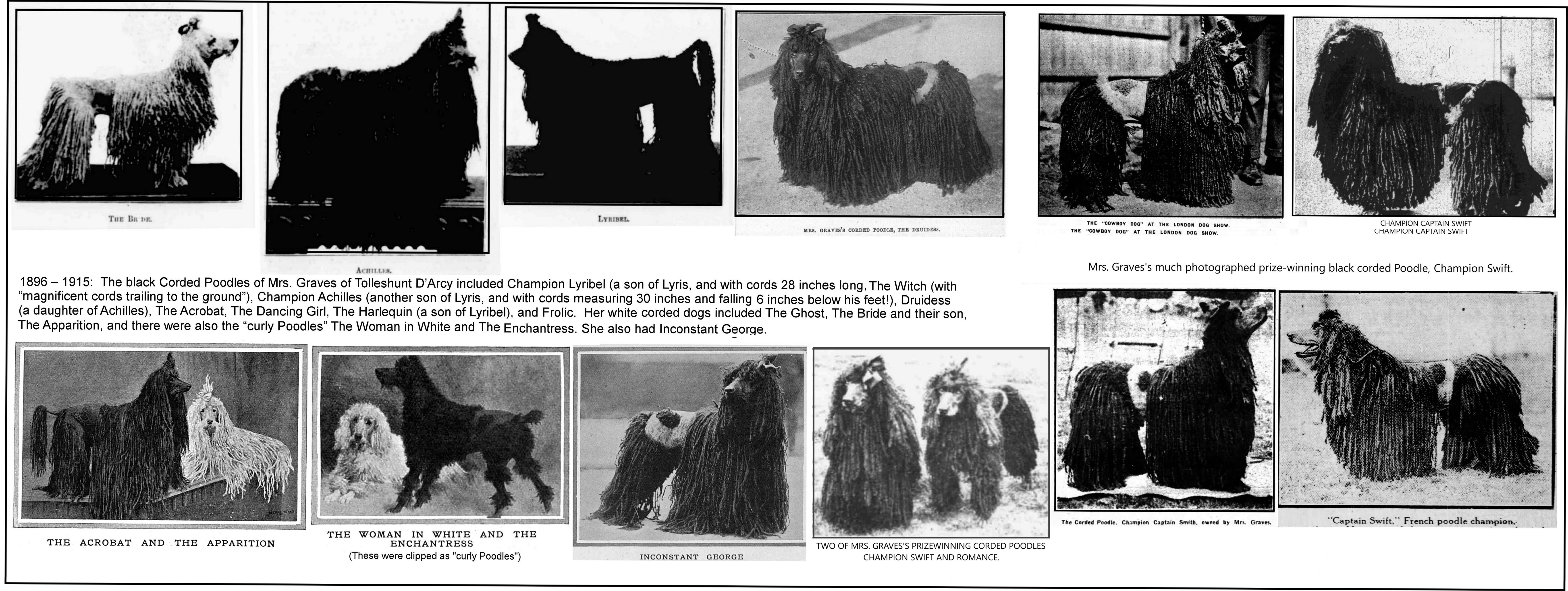
Mr. R. V. O. Graves and Mrs. W. Graves, of Tolleshunt D'Arcy, specialised in corded poodles and some of their dogs had cords of over a yard in length which lay for twelve inches or more on the ground. Mr. Graves's method for getting the long cords was to never touch the coat with comb or brush, but to keep it free from mats by using the fingers as a comb.
Their black corded Poodles included Champion Lyribel (a son of Lyris, and with cords 28 inches long), The Witch (with "magnificent cords trailing to the ground"), Champion Achilles (another son of Lyris, and with cords measuring 30 inches and falling 6 inches below his feet!), Druidess (a daughter of Achilles), The Acrobat, The Dancing Girl, The Harlequin (a son of Lyribel), and Frolic. Her white corded dogs included The Ghost, The Bride and their son, The Apparition, and also the "curly Poodles" The Woman in White and The Enchantress. They also had Inconstant George.

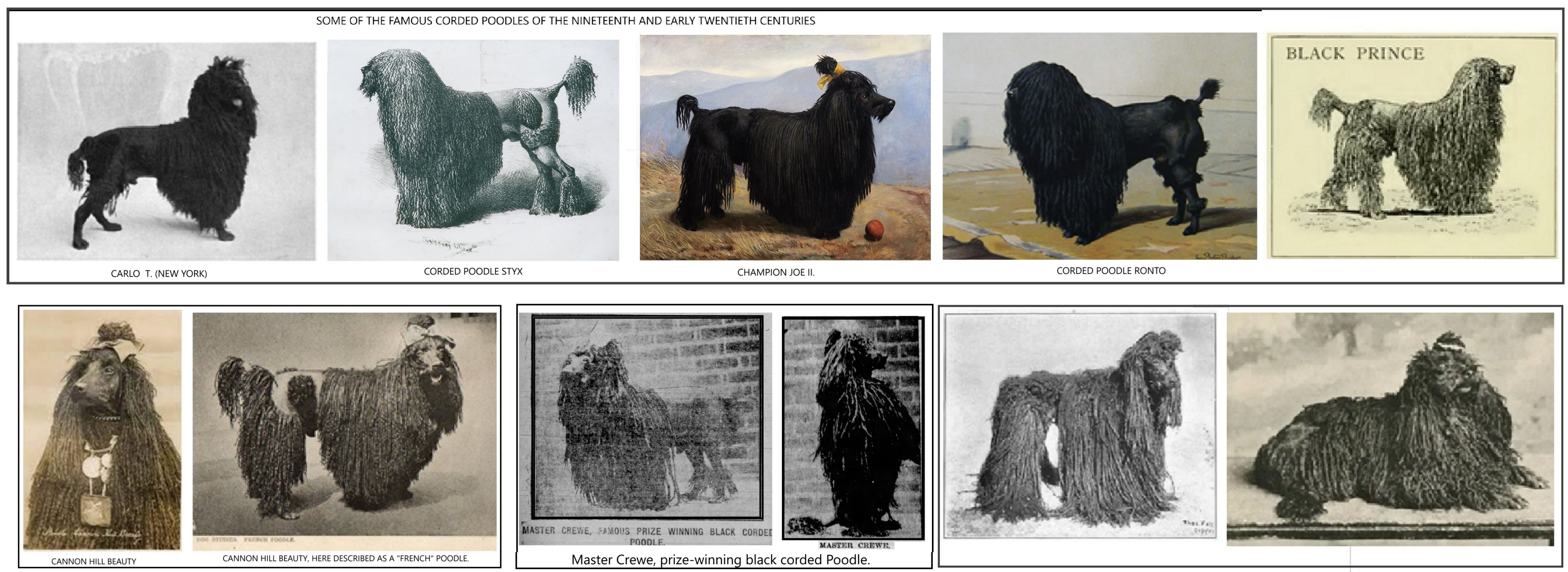
Description of the Coded Poodle from "Dogs and All About Them" by Robert Leighton (1934):
The profuse and long coat of this dog has the peculiarity that if not kept constantly brushed out it twists up into little cords which increase in length as the new hair grows and clings about it. The unshed old hair and the new growth entwined together thus become distinct rope-like cords. Eventually, if these cords are not cut short, or accidentally torn off, they drag along the ground, and so prevent the poor animal from moving with any degree of comfort or freedom. Some few owners, who admire and cultivate these long cords, keep them tied up in bundles on the dog's back, but so unnatural and unsightly a method of burdening the animal is not to be commended.
Corded Poodles are very showy, and from the remarkable appearance of the coat, attract a great deal of public attention when exhibited at shows; but they have lost popularity among most fanciers, and have become few in number owing to the obvious fact that it is impossible to make pets of them or keep them in the house. The reason of this is that the coat must, from time to time, be oiled in order to keep the cords supple and prevent them from snapping, and, of course, as their coats cannot be brushed, the only way of keeping the dog clean is to wash him, which with a corded Poodle is a lengthy and laborious process. Further, the coat takes hours to dry, and unless the newly washed dog be kept in a warm room he is very liable to catch cold. The result is, that the coats of corded Poodles are almost invariably dirty, and somewhat smelly.
At one time it was suggested that cordeds and non-cordeds were two distinct breeds, but it is now generally accepted that the coat of every well-bred Poodle will, if allowed, develop cords. Curly Poodles, on the other hand, have advanced considerably in favour.
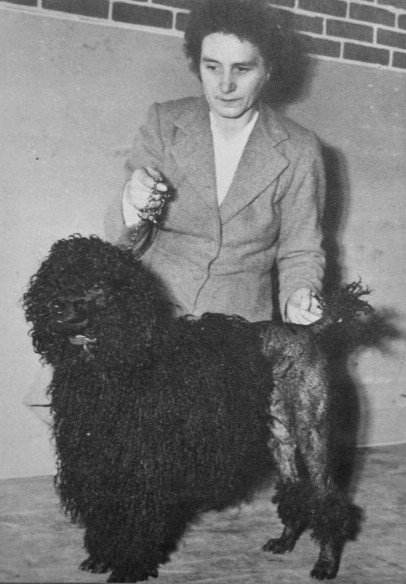
Dogs In Britain, A Description of All native Breeds and Most Foreign Breeds in Britain by Clifford LB Hubbard, 1948:
The Corded Poodle was an ordinary Poodle in which the hair was allowed and encouraged to grow into long, tight, rope-like cords. It is now completely out of fashion, but at one time was commonly exhibited. Its structure was basically that of the Curly-coated Poodle and the difference merely that in treatment of coat. Poodle hair if left unattended tends to form natural twists or cords. which gradually lengthen with growth and become a nuisance. The cords of the Corded Poodles were cultivated with great care and often reached a length of 30 inches or so. In order to reduce the brittleness of the cords it was customary to oil them, which had the effect of keeping the cords supple, but the dog unpleasantly smelly. Dirt adhered to the oily coat and as the dog could not be washed without great inconvenience it usually became unpleasant as a house-pet, and its type eventually went out of favour altogether.
The illustration [Cannon Hill Beauty] shows the bizarre and admittedly showy appearance of a dog so treated; this dog was bred by Madame H. A. Dagois and became the property of Mrs. W. Bowers who exhibited it with great success, in the 1890 s. Others of the type were Champion Vladimir , Champion The Joker (sire of another good Corded Poodle Perfection and a Curly-coated Poodle Orchard Admiral ), and The Runaway Girl . The most prominent breeders of Cordeds were Mrs. R. V. O Graves and Mrs. L. W. Crouch. In 1937 Mr. Graves still had one Corded Poodle as a pet; it may have been the last well-bred one in England.
